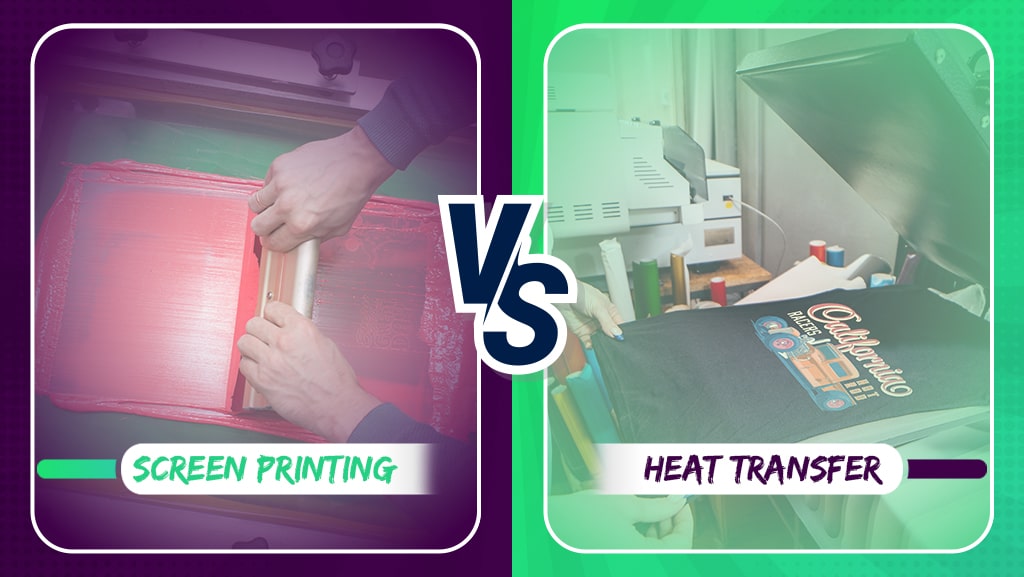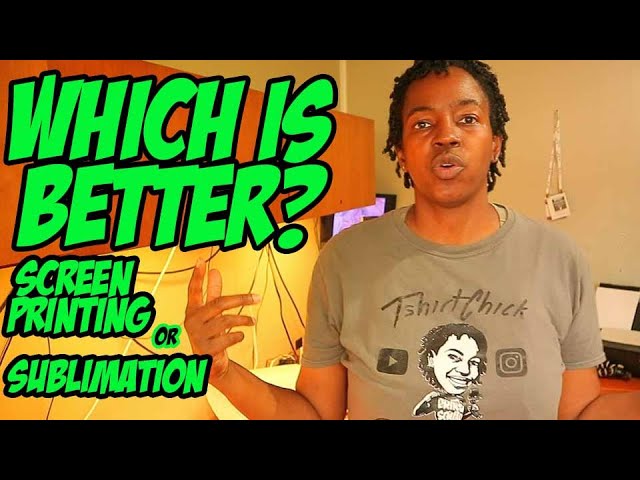Little Known Questions About Tx Tees.
Little Known Questions About Tx Tees.
Blog Article
7 Easy Facts About Tx Tees Explained
Table of ContentsSome Known Factual Statements About Tx Tees Facts About Tx Tees UncoveredFascination About Tx TeesFascination About Tx TeesNot known Facts About Tx TeesFascination About Tx TeesIndicators on Tx Tees You Need To Know
That brings your overall to roughly $1,900 gross and shipping. Build up various other prices, like the variety of utilities it takes to run the shop and the price of ink and emulsion per design. custom screen printing. Take the print listed below. This is a one-color image, so the price of ink per tee shirt is about 20 cents.The emulsion needs to only be a few cents considering that you 'd only need to coat one screen for this work. Generally, printers try to make up to 45% earnings on a print work.

With DTF, you can print a handful of shirts, or simply one. Utilize the exact same calculator as the area over to compute just how much earnings you 'd use DTF transfers. Compare the prices and profits to whichever technique speaks ideal to your arrangement and process. Both display printing and DTF have their particular niches worldwide.
The 5-Second Trick For Tx Tees
The most effective way to understand? Ask around and see what printing shop like yours are doing. embroidery shop. Try both out and see which you like better
When you're choosing what sort of printing approach to make use of for printing your artwork styles on your garments, it is very important that you know the differences between these two methods so you can maximize outcomes while minimizing prices. Display printing is the most commonly used technique for publishing designs on textiles.
DTG printing is also called spot or direct to garment printing due to the fact that it publishes just what is required instead of making a screen as screen printers do. https://txtees02.bandcamp.com/album/tx-tees. Display printing works by display filler squeegee screen printing ink display mesh screen, then transferring the picture to garment making use of heat and/or pressure
The DTG printer uses special dye-sublimation inks that are applied into a pre-designed picture by an electronic printing system. The inks come to be component of the fabric, enabling dynamic shades and phenomenal information. It's also called place or direct to garment printing because it prints only what is required rather than making a screen as display printers do.
All about Tx Tees
First, it's much quicker - you can publish a fullcolor image in mins, rather than hours for screen printing. Second, there's no set up time or costs included - you can publish any kind of style you like, without having to produce a display. Third, there's no waste - due to the fact that display printers screen print one design at a time, they need to screen each color independently.
The paper is very expensive and can just be made use of once. Once it's printed on, it has actually to be thrown out. - The initial purchase rate is reduced than the ahead of time investment of DTG printers- You can print multi-color styles one screen each time rather than having to print each shade independently like DTG printing.

Our Tx Tees PDFs
Rather of making use of display mesh as display printers do, color sublimation printers make use of laser innovation to move your images onto garments or paper. A warmth process moves the dye from its solid-state directly right into the gas stage which subsequently integrates it onto textile substrates when they are swiftly heated up to heats under high pressure.
Sublimation printing is environmentally friendly. It uses less water than screenprinting, and due to the fact that it does not involve the use of hazardous solvents, it's risk-free for all sorts of apparel. The color sublimation inks are additionally odor free when healed, unlike display printers that make use of harmful chemicals during the display printing procedure that leave behind an unpleasant odor.
They also save cash on expensive devices like exposure units considering that color sublimation printers don't call for a UV exposure system or a flash cure stove that is typically made use of in screen printing (custom screen printing). What is straight to garment printing (DTG Printing)? DTG printing is an electronic screenprinting procedure that prints straight onto material making use of specialized inkjet printers
The 25-Second Trick For Tx Tees
DTG printing offers several benefits over standard screenprinting, including the capability to print photo quality pictures, better color vibrancy, and the ability to publish layouts on darker textiles. DTG printers function by heating up the fabric ink till it develops into a gas. The gas after that penetrates the textile, bonding with the fibers to develop an irreversible print.

Screen printers merely prepare their display after that begin printing till they lack product or ink.- There is a broad range of skilled display printers throughout the world, which can be valuable for novices. - It's a slower process - display printers frequently need to wait on the ink to dry before they can print the following color- Display printers call for manual work, so there's a higher knowing curve and it takes longer to generate a top notch design- Display printing isn't as precise as DTG printing, so you may obtain some "blood loss" of shades from one component of the image onto an additional if not done correctly.
The 8-Second Trick For Tx Tees
However, rather than using screen mesh as screen printers do, color sublimation printers utilize laser modern technology to transfer your pictures onto garments or paper. A warmth procedure transfers the color from its solid-state directly right into the gas stage which in turn integrates it onto fabric substratums when they are rapidly heated to heats under high stress.
Sublimation printing is green. It utilizes less water than screenprinting, and since it doesn't include making use of harmful solvents, it's risk-free for all kinds of garments. The dye sublimation inks are likewise unsmelling when cured, unlike screen printers that make use of unsafe chemicals during the screen printing procedure that leave an unpleasant odor.
They additionally save money on costly tools like exposure systems because color sublimation printers don't need a UV direct exposure device or a flash remedy oven that is typically made use of in display printing. What is direct to garment printing (DTG Printing)? DTG printing is a digital screenprinting process that publishes directly onto textile making use of specialized inkjet printers.
What Does Tx Tees Mean?
DTG printing supplies several advantages over standard screenprinting, including the capacity to publish photo high quality pictures, better shade vibrancy, and the capability to publish styles on darker fabrics. DTG printers work by heating up the fabric ink up until it develops into a gas. The gas then permeates the textile, bonding with the fibers to create a long-term print.
Report this page